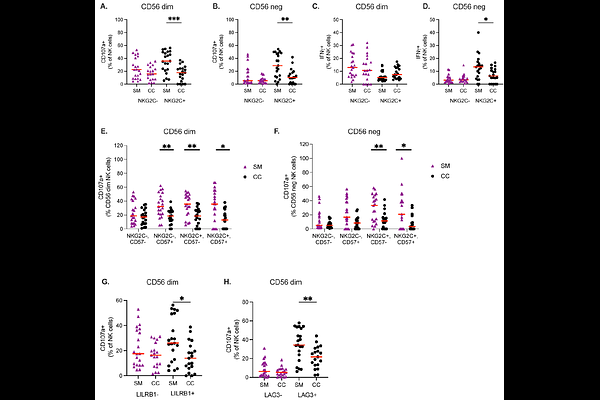Natural killer cell function in children with severe malaria differs according to malaria transmission intensity

Natural killer cell function in children with severe malaria differs according to malaria transmission intensity
Turyasingura, G.; Mellencamp, K. A.; Namazzi, R.; Opoka, R. O.; John, C. C.; Hart, G. T.
AbstractMemory-like Natural Killer (NK) cells with enhanced antibody-dependent cellular cytotoxicity (ADCC) have correlated with protection from uncomplicated malaria in prior studies. However, the role of NK cells in severe malaria (SM) has not been characterized. In Ugandan sites with moderate and low malaria transmission, we evaluated NK cell (CD56bright, CD56dim, CD56neg) phenotype and ADCC function by flow cytometry in children <5 years of age with SM (n=21) and control community children (CC, n=19). Children with SM had similar total NK cell counts to CC. Children with SM had a higher proportion of LILRB1+ NK cells than CC. Level of malaria transmission in an area was related to NK cell function. In the low malaria transmission only, children with SM had a higher proportion than CC of NK cells that degranulated, whereas children with SM from both low and moderate malaria transmission areas had lower IFNg; production than CC. We next evaluated functional Boolean gating for degranulation and IFNg production (CD107a+/IFNg-, CD107a-/IFNg+, and CD107a+/IFNg+) in relation to memory-like and checkpoint/exhaustion NK cell markers in low and moderate malaria transmission SM and CC groups. We found there was a significant increase in degranulating only NK cells (CD107a+, IFNg-) in children with SM compared to CC solely in the low malaria transmission area. However, there was a significant decrease in NK cells that produced IFNg; but did not degranulate (CD107a-, IFNg+) in children with SM compared to CC in both low and moderate transmission areas. Our data reveal compound functional differences in NK cells among children with SM living in areas of low versus moderate malaria transmission; however, a consistent finding is reduced NK cell IFNg production in SM, regardless of transmission intensity.